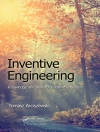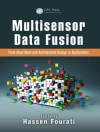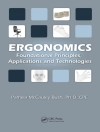The most useful properties of food, i.e. the ones that are detected through look, touch and taste, are a manifestation of the food’s structure. Studies about how this structure develops or can be manipulated during food production and processing are a vital part of research in food science. This book provides the status of research on food structure and how it develops through the interplay between processing routes and formulation elements. It covers food structure development across a range of food settings and consider how this alters in order to design food with specific functionalities and performance. Food structure has to be considered across a range of length scales and the book includes a section focusing on analytical and theoretical approaches that can be taken to analyse/characterise food structure from the nano- to the macro-scale. The book concludes by outlining the main challenges arising within the field and the opportunities that these create in terms of establishing or growing future research activities.
Edited and written by world class contributors, this book brings the literature up-to-date by detailing how the technology and applications have moved on over the past 10 years. It serves as a reference for researchers in food science and chemistry, food processing and food texture and structure.
Table des matières
The Role of Hydrocolloids in the Development of Food Structure; The Role of Proteins in the Development of Food Structure; Food Structure Development in Emulsion Systems; The Role of Bubbles in the Development of Food Structure; Food Structure Development in Oil and Fat Systems; Food Structure Development in Chocolate; Food Structure Development in Cereal and Snack Products; Food Structure Development for Rheological/Tribological Performance; Developing Food Structure for Mechanical Performance; Design Structures for Optimal Sensory Performance; The Development of Food Structures for the Encapsulation and Delivery of Bioactive Compounds; Food Structure Analysis Using Light and Confocal Microscopy; Food Structure Characterisation Using Small-angle Scattering Methods; Applications of Scanning Electron Microscopy and Atomic Force Microscopy to Food Structure Characterisation; Modelling and Computer Simulation Approaches to Understand and Predict Food Structure Development: Structuring by Gelation and Self-association of Biomolecules; Development of Food Structure via Sustainable Processing Systems; Food Structure Development/Production Through Flexible Processes: The Use of Electric Fields to Enable Food Manufacturing; Development of Health Food Structures: Reduction of Sugar, Salt and Fat; Food Structure Development for Specific Population Groups












